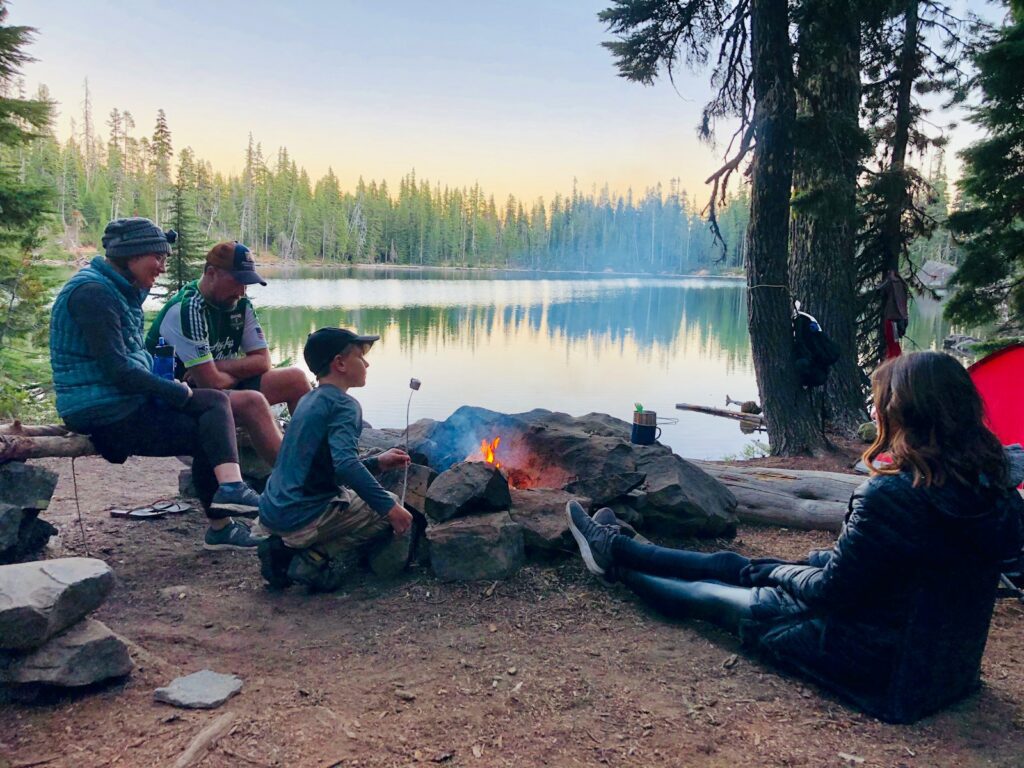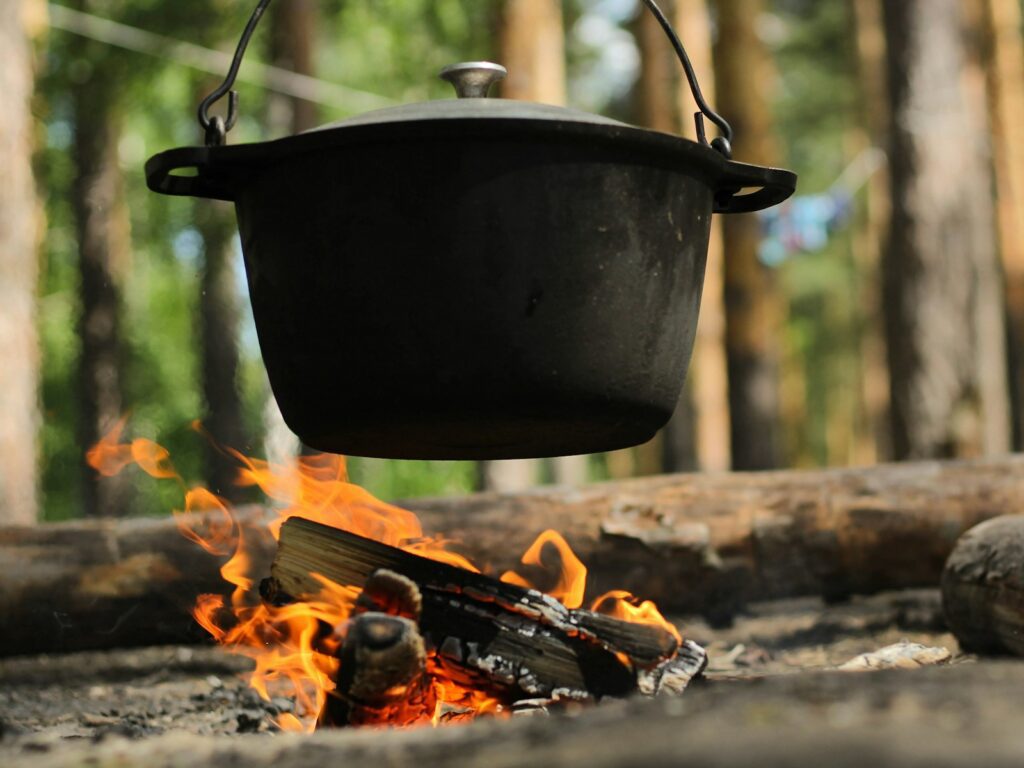How To Plan a Stress-Free Camping Trip
Camping for beginners might seem daunting. But it is a wonderful outdoor activity that provides an opportunity to escape the hustle and bustle of daily life, reconnect with nature, and create lasting memories with your family.
However, a successful camping trip requires careful planning and preparation, especially if you’re new to camping. From choosing the perfect campground to planning activities, sleeping arrangements, and delicious campfire meals, we’ve got you covered.
Choosing The Best Campground
The first and most crucial step in planning a successful camping trip is selecting the right campground. The campground you choose will significantly impact your overall experience. Here are some key factors to consider when making this decision.
- Location and Distance: Decide how far you want to travel for your camping adventure. For shorter trips, especially if you have children, it’s wise to choose a campground close to home. The length of the drive can be challenging for kids, so keep their comfort in mind.
- Research State and National Parks: Every state offers a variety of state parks and national parks with camping facilities. Start by checking out your state’s tourism department, which typically provides brochures and information on these destinations. You can also explore camping websites to find more options and read reviews from fellow campers.
- Outdoor Activities: Consider the outdoor activities that you and your family enjoy the most. Whether it’s swimming, fishing, hiking, birdwatching, or other activities, choose a campground that offers these options. Remember that children are often more interested in things to do than things to see, so prioritize activities that keep them engaged.
- Avoid Peak Seasons: If possible, try to avoid extremely popular camping areas during their peak seasons. Crowded campgrounds can diminish the tranquility of your camping experience. Look for alternative campgrounds and less crowded state and national parks to enjoy a more peaceful environment.

Researching Your Chosen Campground And The Surrounding Area
Once you’ve selected a campground that suits your family’s preferences, it’s essential to gather as much information as possible about it and the surrounding area. Here’s what you should investigate:
- Campground Information: Check online resources and the campground’s official website if available. You can also call the campground directly to inquire about any specific details, amenities, or regulations.
- Local Attractions: Explore nearby attractions that might be fun to visit during your camping trip. Talk to the campground manager for recommendations and information about local points of interest.
- Emergency Facilities: Identify the nearest medical facility or hospital where you can seek emergency first aid if needed. Safety should always be a priority when camping.
- Sanitary Facilities: Find out what sanitary facilities are available at the campground. Are there flush toilets, showers, and hot water? Does the campground have a store where you can purchase essentials like firewood? Be aware of any restrictions on bringing your firewood due to invasive species concerns.
- Campsite Amenities: Check the amenities at your chosen campsite, such as the presence of picnic tables, fire rings with grates, and access to drinkable water. Depending on your preferences, you may also want to bring your camping stove and grill.
- Site Regulations: Understand the rules and regulations at the campground, including the maximum number of tents and cars allowed at each campsite. Consider the proximity of car parking to the tent site, as this can be important for large family tents.
Costs And Rules
Another critical aspect of planning your camping trip is understanding the costs and rules associated with your chosen campground. Here are some considerations:
- Campsite Fees: Determine the cost of your campsite, which may include entrance fees for state or national parks. If you plan to camp frequently or in multiple national parks, consider purchasing an annual pass for potential savings.
- Reservation Policies: Find out if you can reserve your campsite in advance or if it’s first-come, first-served. Knowing this information will help you secure your preferred campsite.
- Pet Policies: If you’re bringing pets along, be sure to understand the campground’s pet policies and any specific rules you need to follow.
- Special Permits: Some camping activities, such as backpacking, may require special permits. Ensure that you have the necessary permits if you plan on engaging in such activities.
Camping for beginners: Safety first
Before engaging on a camping trip, check thoroughly to see if you have all the important medicines and medical supplies to make your first aid kit complete. A flashlight, magnifying glass, dependable Swiss Army knife and an emergency cell phone should be included in the kit.
Tell your companions to steer away from animals even though they look so cute. Disturbing their natural habitat can turn them from furry animals to terrible critters. It is easy to get injured when you cavort with wild animals. An animal is an animal whether wild or domesticated. You can never tell what their reaction will be to your stimulus. They may find your approach offensive which will make them retreat on the defensive and counter you with an attack.
Avoid rocks
Large rocks can be dislodged at any time. It would be a stressful situation when it happens in the most inappropriate time—during sleep. Avoid any unexpected situations by making sure that you steer the camp away from large rocks that can be dislodged at a moment’s notice. Poisonous snakes and animals often use large rocks and huge trees as their shelter. Make sure that these things have been considered when selecting your pitch spot.
Think about food safety
Make sure that you store food on containers that keep it fresh longer. Plastic bins are recommended because it will give animals a hard time to steal your food. Keep a tight lid on your food containers to avoid the aroma from attracting nearby animals. Make sure as well that you put your food containers in an area where animals cannot easily get or smell it.
Campground Activities
Once you have chosen the “perfect” campground for your family, you need to think beyond the location. When camping for beginners, there are three areas that would benefit from some careful thought. They are: activities, sleeping arrangements and eating. Try to get as much input as you can. Here are some suggestions to help you provide a memorable camping experience.

Activities For Small Children
For toddlers and young children, simplicity is key. Children thrive on nature-based games and learning experiences. Consider activities like:
- Playing in the Dirt or Sand: Allow young children to enjoy the freedom of playing in the dirt or sand. Camping is an excellent opportunity for them to get dirty and explore nature.
- Nature Scavenger Hunts: Organize scavenger hunts where children search for items based on their age and abilities. Younger kids can look for different colors, while older ones can search for specific flowers, leaves, or birds.
- Bird Watching: Equip your children with binoculars and a nature guide to start bird watching. Encourage them to identify and document the bird species they encounter.
Activities For Teens
Teenagers enjoy challenges and opportunities for self-expression. Consider these activities for your teenagers:
- Hiking: Plan a challenging hike suitable for their age and experience level. Hiking can provide a sense of accomplishment and an opportunity for journaling and photography.
- Photography and Journaling: Encourage teens to document the camping trip through photography and journaling. This can foster creativity and self-expression.
Sleeping Arrangements
Comfortable sleeping arrangements are crucial for a good night’s rest during your camping trip. Here are some tips to ensure a peaceful night’s sleep:
- Choose the Right Tent: Select a tent that comfortably accommodates your family’s size. Keep in mind that manufacturer’s capacity ratings may overestimate. A 3-room cabin tent can be a great option for medium-sized families.
- Sleeping Bags: Invest in quality sleeping bags rated for the expected lowest temperature during your camping trip. It’s better to be prepared for cold weather and unzip the bag if it’s too warm.
- Sleeping Pads: If you’re sleeping on the ground, use sleeping pads to provide cushioning and insulation from the cold ground. This helps keep you warm and comfortable.
- Pillows and Comfort Items: Bring pillows or comfortable substitutes for small children. Familiar blankets or toys can provide comfort and help them fall asleep easily.
- Lighting: Ensure that everyone has a small flashlight or headlamp for nighttime convenience and to alleviate any anxieties.
Eating
Planning and cooking campfire meals can be an enjoyable part of your camping experience. Here’s how to make your camping meals a success:
- Menu Planning: Involve your family in planning the camping menus. Meals should be easy to prepare over a campfire or camping stove. Consider using a versatile grill to expand your menu options.
- Involving Children: Encourage children to choose and help prepare a meal. Perhaps each child could choose a meal that they will prepare. Of course, Mom or Dad will help the younger ones, but they could at least stir the pot or pour water. Also, make sure your family understands that clean up is everyone’s job.
- Breakfast: Breakfast can be as simple as cereal and fruit or breakfast bars. Or you can cook an extravaganza consisting of eggs, bacon, sausage or pancakes. That type of meal needs a good camping grill to bring it off. Don’t skimp on breakfast. You will need plenty of carbs to fuel your activities during the day. Also remember, it’s the smell of cooking in the open that will remain in your memory for years to come. So cook something that smells good!
- Lunch: Lunch is usually eaten on the run. If you are hiking or swimming or doing some other activity, you can carry trail mix, packages of cheese or peanut butter and crackers. Slices of pepperoni and cheese give lots of energy. Don’t worry about calories…you’ll burn them off.
- Dinner: Dinner is often the main meal of the day. Plan meals that can be prepared easily and thoroughly cleaned up before darkness falls. Consider one-pot meals in Dutch ovens, foil packet cooking over the campfire, or classic campfire hot dogs.
- Special Treats: Don’t forget to indulge in camping classics like s’mores, popcorn cooked over the campfire in foil pans, or instant pudding. I’ll never forget the time I had planned instant chocolate pudding and found a stand of wild raspberries. What a combination!

Remember to be flexible
While planning your camping trip, it’s essential to strike a balance between activities and downtime at the campsite. Plan a mix of exciting activities and relaxation time at the campsite. Remember that flexibility is key, as unexpected challenges can turn into cherished memories.
Go for it!
Hopefully this guide has covered the considerations to get started. Camping is a rewarding outdoor adventure that offers a break from the daily grind and a chance to connect with nature and loved ones. By carefully planning and preparing for your camping trip, you can ensure a stress-free and enjoyable experience. So, pack your gear, gather your loved ones, and embark on a camping adventure that will leave you with lasting smiles for years to come!
